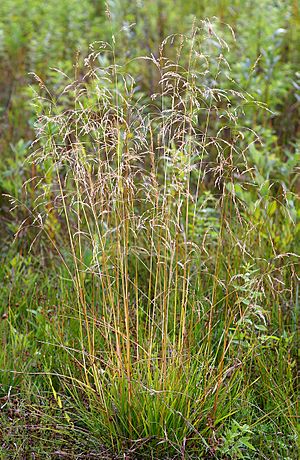Tufted hairgrass facts for kids
Quick facts for kids Tufted hairgrass |
|
|---|---|
 |
|
| Scientific classification | |
| Synonyms | |
|
Deschampsia caespitosa |
Deschampsia cespitosa, often called tufted hairgrass or tussock grass, is a type of grass that lives for many years. It grows in clumps, like a small bush. You can find this grass all over the world, including North and South America, Europe, Asia, and Australia.
People sometimes grow tufted hairgrass in their gardens because it looks nice. There are many different types, called cultivars, that gardeners can choose from. Two popular types, 'Goldschleier' and 'Goldtau', have even won a special award called the Royal Horticultural Society's Award of Garden Merit.
This grass is also important for some insects. It provides food and a home for the young (larvae) of certain butterflies, like the Juba skipper and the umber skipper.
What Tufted Hairgrass Looks Like
One special thing about the leaves of tufted hairgrass is how they feel. If you rub your hand along the top of a leaf in one direction, it feels rough and can even cut you. But if you rub it the other way, it feels smooth! The top sides of the leaves are dark green and have deep grooves.
This grass can grow quite tall, up to about 1.4 meters (4.5 feet). It also has a long, thin, pointed part called a ligule, which is a small flap where the leaf blade meets the stem. Tufted hairgrass usually blooms, or flowers, from June to August.
Where Tufted Hairgrass Grows
You can find tufted hairgrass in many different kinds of grasslands. It especially likes soil that doesn't drain water very well. In some parts of Britain, it's a very common plant in certain types of grasslands. It can grow in high places too, up to about 1,200 meters (4,000 feet) above sea level.
In the coastal grasslands of western North America, like the California coastal prairie, tufted hairgrass often grows alongside other native grasses. Some of these include Festuca californica, Festuca idahoensis, Danthonia californica, and Nassella pulchra.
Gallery



